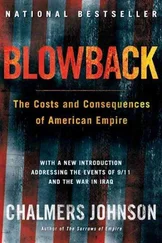Chalmers Johnson - MITI and the Japanese miracle
Здесь есть возможность читать онлайн «Chalmers Johnson - MITI and the Japanese miracle» весь текст электронной книги совершенно бесплатно (целиком полную версию без сокращений). В некоторых случаях можно слушать аудио, скачать через торрент в формате fb2 и присутствует краткое содержание. Год выпуска: 2007, Издательство: Stanford University Press, Жанр: Старинная литература, на английском языке. Описание произведения, (предисловие) а так же отзывы посетителей доступны на портале библиотеки ЛибКат.
- Название:MITI and the Japanese miracle
- Автор:
- Издательство:Stanford University Press
- Жанр:
- Год:2007
- ISBN:нет данных
- Рейтинг книги:3 / 5. Голосов: 1
-
Избранное:Добавить в избранное
- Отзывы:
-
Ваша оценка:
- 60
- 1
- 2
- 3
- 4
- 5
MITI and the Japanese miracle: краткое содержание, описание и аннотация
Предлагаем к чтению аннотацию, описание, краткое содержание или предисловие (зависит от того, что написал сам автор книги «MITI and the Japanese miracle»). Если вы не нашли необходимую информацию о книге — напишите в комментариях, мы постараемся отыскать её.
MITI and the Japanese miracle — читать онлайн бесплатно полную книгу (весь текст) целиком
Ниже представлен текст книги, разбитый по страницам. Система сохранения места последней прочитанной страницы, позволяет с удобством читать онлайн бесплатно книгу «MITI and the Japanese miracle», без необходимости каждый раз заново искать на чём Вы остановились. Поставьте закладку, и сможете в любой момент перейти на страницу, на которой закончили чтение.
Интервал:
Закладка:
The Foreign Capital Law dealt with this problem. It established a Foreign Investment Committee and stipulated that foreign investors wanting to license technology, acquire stock, share patents, or enter into any kind of contract that provided them with assets in Japan had first to be licensed (kyoka) by the committee. (At the end of the occupation, the powers of this committee were transferred to the Enterprises Bureau). SCAP approved the law in order to guarantee the availability of foreign exchange for license payments, but the Japanese were more interested in restricting the import of foreign technology to those cases deemed necessary for the development of Japanese industries. As SCAP wrote, "Restrictive provisions of the law were to be relaxed and eliminated as the need for them subsided."
40
But restrictions did not even begin to be relaxed until 1968, long after Japan's balance of payments constraints had been overcome.
41
The next big accomplishment of the Enterprises Bureau was the En-
Page 218
terprises Rationalization Promotion Law of 1952, on which it had spent some two years in planning, consultation, and political preparation. Its actual drafters were Ishihara and Hizume. MITI refers to it as a "completely epoch-making law."
42
Its complex provisions can be reduced to three basic points: first, it provided direct governmental subsidies for the experimental installation and trial operation of new machines and equipment, plus rapid amortization and exemption from local taxes of all investments in research and development; second, it authorized certain industries (to be designated by the cabinet) to depreciate the costs of installing modern equipment by 50 percent during the first year; and third, it committed the central and local governments to building ports, highways, railroads, electric power grids, gas mains, and industrial parks at public expense and made them available to approved industries.
43
The last provision was perhaps the most important because it drastically reduced production costs. It began the extensive efforts by MITI and the Ministry of Construction over the next two decades not just to build the infrastructure for industry but to rationalize it as completely as possible. The idea behind the provision was the recognition that since Japan's industries had to import most of their raw materials and to export their products, factories and port facilities should be completely integrated. The prewar Japanese steel industry had worked out the rule of thumb that it had to transport six tons of raw materials in order to produce one ton of steel.
44
MITI planned to change that by dredging harbors, building factories at dockside, and locating intermediate processors next to final manufacturers. One of the most famous products of this policy is the Keiyo* industrial belt and petrochemical
kombinato
, which was built in Chiba prefecture on land entirely reclaimed from Tokyo Bay. The Kawasaki Steel Company alone, which in 1953 fired the first blast furnace of its new, integrated facility (pig iron to rolled steel; at the time, the world's most modern), received some 3 million square meters of free land from Chiba prefecture. Ichimada, the banks, and Kawasaki's biggest competitors (Yawata, Fuji, and Nippon Kokan*) all derided the Kawasaki effort at the time as beyond Japan's capabilities and needssomething MITI has never let them forget in view of its unexampled success.
45
Despite MITI's own early successes with the Development Bank, the Foreign Capital Law, and the Rationalization Council and Law, Japan was still some remove from a true high-growth system. Throughout the 1950 to 1954 period economic fluctuations buffeted the country. These fluctuations were caused, first, by the Korean truce negotiations and truce and, second, by balance of payments problems, since
Page 219
TABLE
16
Japan's Business Cycle, 19501974
Popular name
Period
Duration
Doran * bumu* (Korean War boom)
6/506/51
13 months
Kyusen* hando* (Truce recession)
7/5110/51
4 months
Shohi* keiki (consumption boom)
11/511/54
27 months
Nijuku-nen* fukyo* (the 1954 recession)
2/5411/54
10 months

Jimmu keiki (boom unprecedented since the emperor Jimmu)
12/546/57
31 months

Nabezoko fukyo (bottom-of-the-pot
recession)
7/576/58
12 months

Iwato keiki (boom unprecedented since the time of the sun goddess Amaterasu)
7/5812/61
42 months
Sanjushichi-nen* fukyo (the 1962 recession)
1/6210/62
10 months

Kokyokan-naki* hanei (prosperity without a sense of boom)
11/6210/64
24 months

Yonju-nen* fukyo (the 1965 recession) (also called the Kozoteki fukyo, the structural recession)
11/6410/65
12 months

Izanagi keiki (boom unprecedented since the god Izanagi joined with Izanami to create the islands of Japan)
11/656/70
56 months

Yonjugo* yonjuroku-nen* fukyo (the 197071 recession)
7/7012/71
18 months
Ijo* infure no jiki (period of unusual inflation)
1/721/74
25 months
Sekiyu shokku igo (after the Oil Shock)
2/74
SOURCE
: Togai Yoshio, "Sengo Nihon no kigyo* keiei" (Postwar Japanese enterprise management), in Kobayashi Masaaki et al., eds.,
Nihon keieishi o manabu
(The study of Japanese enterprise management), Tokyo, 1976, 3: 2.
imports outran exports whenever the people's economic conditions improved even slightly (see Table 16). The recessions of 1951 and 1954 caused numerous bankruptcies (the largest was that of Amagasaki Steel, which was absorbed by Kobe Steel), and manufacturers turned increasingly to the government for direction. The government, however, was divided. To the extent that Yoshida had an economic strategy at all, it was to ally Japan with the United States as closely as possible. MITI officials did not necessarily disagree with this approach, but their nationalism prompted them to plan to compete with the United States as well as rely on it. Moreover, some of them wanted to try to restore Japan's traditional China trade, which Yoshida and the Americans resolutely opposed. Most important, MITI stood for a shift of industrial structure from light to heavy industries, which neither Ichimada nor most consumers thought made economic sense.
On April 28, 1952, the San Francisco peace treaty restoring Japan's
Page 220
independence came into effect. On May 29, 1952, thanks to U.S. sponsorship, Japan was admitted to the International Monetary Fund and the International Bank for Reconstruction and Development (the "World Bank"); and on August 12, 1955, Japan joined the General Agreement on Tariffs and Trade (GATT). However, at the time both Japan's IMF and GATT memberships were in the special category reserved for poor countries. On September 15, 1953, Japan also concluded a basic commercial treaty with the United States. Some of these affiliations did not go down well in Japanparticularly Yoshida's plan to "introduce foreign capital" via loans from the World Bank, which irritated many nationalists and led to shouts of "national dishonor" in the Diet.
Читать дальшеИнтервал:
Закладка:
Похожие книги на «MITI and the Japanese miracle»
Представляем Вашему вниманию похожие книги на «MITI and the Japanese miracle» списком для выбора. Мы отобрали схожую по названию и смыслу литературу в надежде предоставить читателям больше вариантов отыскать новые, интересные, ещё непрочитанные произведения.
Обсуждение, отзывы о книге «MITI and the Japanese miracle» и просто собственные мнения читателей. Оставьте ваши комментарии, напишите, что Вы думаете о произведении, его смысле или главных героях. Укажите что конкретно понравилось, а что нет, и почему Вы так считаете.












